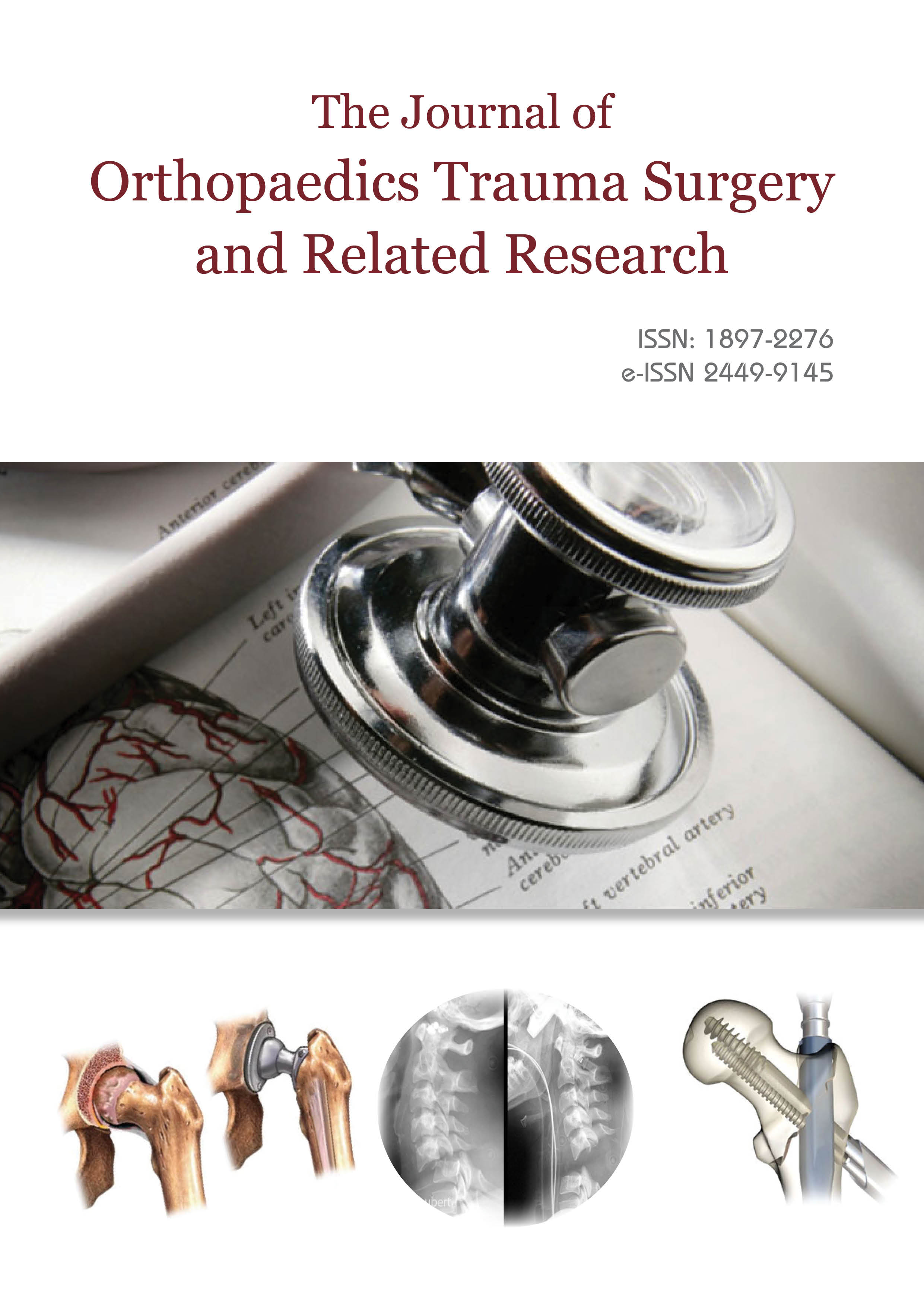Journal of Orthopaedics Trauma Surgery and Related Research

An Official Journal of Polish Society of Orthopaedics and Traumatology
ISSN:1897-2276
e-ISSN: 2449-9145

An Official Journal of Polish Society of Orthopaedics and Traumatology
ISSN:1897-2276
e-ISSN: 2449-9145
Editor in Chief:
Prof. Tomasz Bielecki MD, Ph.D.
Head of the Clinical Department of Orthopaedic-Traumatic, Oncological and Reconstructive Surgery, Medical University of Silesia in Katowice, Poland
Journal of Orthopaedics Trauma Surgery and Related Research is high impact peer reviewed international journal that publish the articles which are freely accessible. The journal aims to disseminate the exciting updates in the scope of Orthopaedics, traumatology, arthritis, arthroplasty, bone research, fractures and surgeries, Osteoporosis, Osteonecrosis, Osteosarcoma, rheumatoid arthritis, bone cancer, orthodontics, bone fragility, bone grafting, bone metastasis, spine surgery and articles that are of emphasized interest to orthopaedic surgeons or physicians.
Articles are accepted in the form of research/review/original article, case reports/ clinical trials, perspectives, short communications, commentaries, blogs, hypothesis, letter to the editor and additional article types.
| Journal Impact Factor | 2.17* |
| Frequency | Monthly |
| Acceptance Rate | 42% |
| Average Article Processing Time | 30-45 Days |
| Acceptance to Publication Time | 5-7 Days |
Journal of Orthopaedics Trauma Surgery and Related Research is known for rapid peer review from highly qualified reviewers and editors connected with the journal from different continental regions.
The articles are processed and published in the journal within 30-45 days.
Articles can be submitted online through Manuscript Submission Portal
Fast Editorial Execution and Review Process (FEE-Review Process):
Journal of Orthopaedics Trauma Surgery and Related Research is participating in the Fast Editorial Execution and Review Process (FEE-Review Process) with an additional prepayment of $99 apart from the regular article processing fee. Fast Editorial Execution and Review Process is a special service for the article that enables it to get a faster response in the pre-review stage from the handling editor as well as a review from the reviewer. An author can get a faster response of pre-review maximum in 3 days since submission, and a review process by the reviewer maximum in 5 days, followed by revision/publication in 2 days. If the article gets notified for revision by the handling editor, then it will take another 5 days for external review by the previous reviewer or alternative reviewer.
Acceptance of manuscripts is driven entirely by handling editorial team considerations and independent peer-review, ensuring the highest standards are maintained no matter the route to regular peer-reviewed publication or a fast editorial review process. The handling editor and the article contributor are responsible for adhering to scientific standards. The article FEE-Review process of $99 will not be refunded even if the article is rejected or withdrawn for publication.
The corresponding author or institution/organization is responsible for making the manuscript FEE-Review Process payment. The additional FEE-Review Process payment covers the fast review processing and quick editorial decisions, and regular article publication covers the preparation in various formats for online publication, securing full-text inclusion in a number of permanent archives like HTML, XML, and PDF, and feeding to different indexing agencies.
Select your language of interest to view the total content in your interested language
 Journal of Orthopaedics Trauma Surgery and Related Research a publication of Polish Society, is a peer-reviewed online journal with quaterly print on demand compilation of issues published.
Journal of Orthopaedics Trauma Surgery and Related Research a publication of Polish Society, is a peer-reviewed online journal with quaterly print on demand compilation of issues published.